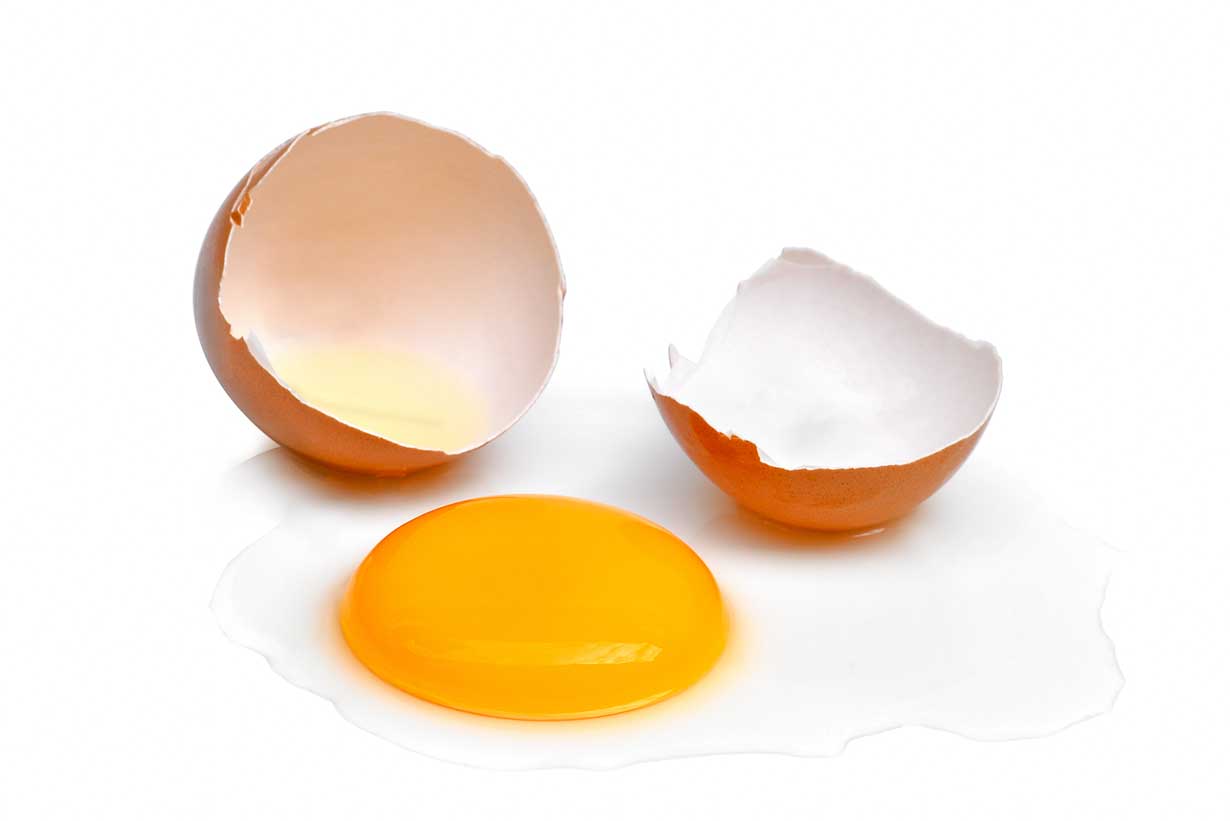Eggs are a common staple food in many parts of the world.
While most of us only know regular chicken eggs, there are many different types of eggs available. Furthermore, these options are equally as nutritious as chicken eggs, if not more so.
There are also many different ways to cook eggs that can influence the nutritional profile, taste, and texture.
This article first examines five different types of eggs and their nutritional values. Following this, there is a guide to seven popular ways of cooking eggs.
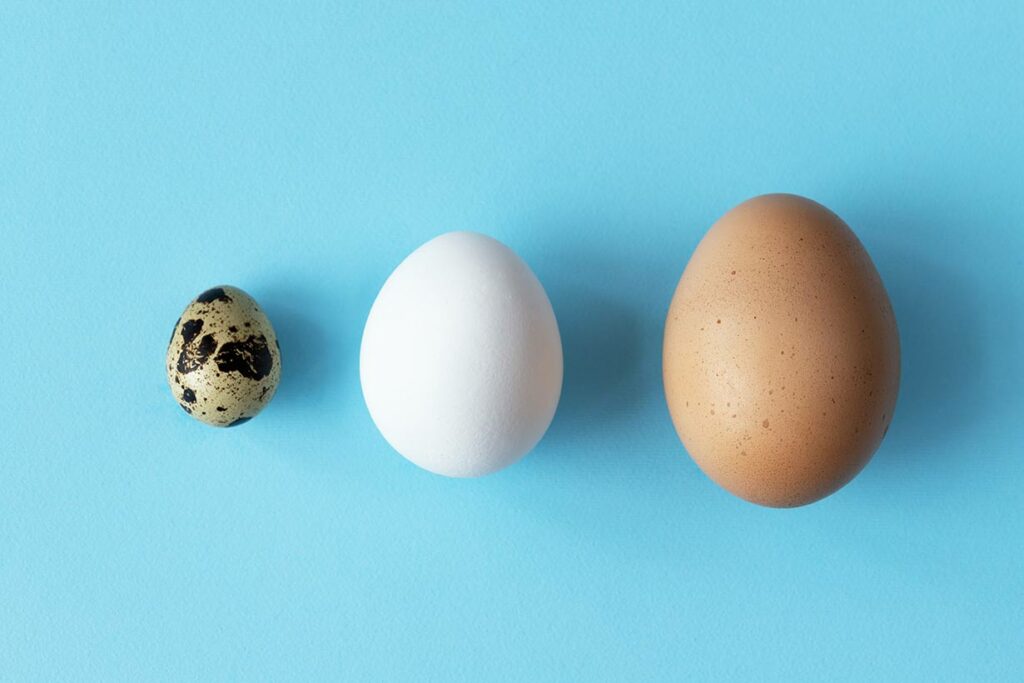
Table of contents
Types of Eggs
In reality, it is possible to find dozens of egg varieties that humans eat around the world.
That said, most of these would be difficult to source. For this reason, here we examine the five most commonly available eggs: chicken, duck, goose, quail, and turkey.
Note: there is a multitude of factors that can affect the size of the egg, and these include (1):
- Age: put simply, older birds lay bigger eggs
- The specific breed of the bird
- Dietary factors such as daily energy intake and daily protein intake
- Lifestyle factors: how the birds are reared, and whether they have access to extra food sources
Chicken Eggs

Chicken eggs, sometimes called hen eggs, are the most popular type of egg.
The shell color of chicken eggs usually tends to be a kind of beige-light brown shade. However, some lesser-common breeds of chicken can lay eggs in various colors, even light green, blue, and pink.
According to the USDA, chicken eggs come in the following average size and weights (2):
- Jumbo: 71 g (2.5 oz)
- Very large: 64 g (2.25 oz)
- Large: 57 g (2 oz)
- Medium: 50 g (1.75 oz)
- Small: 43 g (1.5 oz)
- Peewee: 35 g (1.25 oz)
It is worth noting that these figures are based on the average weight of a dozen eggs, and individual eggs will not always weigh the same.
Nutrition
According to the USDA, here are the basic nutrition facts per typical 50-gram egg (3):
- Calories: 72 kcal
- Carbohydrate: 0.36 g
- Fat: 4.76 g
- – Saturated: 1.56 g
- – Monounsaturated: 1.83 g
- – Polyunsaturated: 0.96 g
- — Omega-3: 0.05 g
- — Omega-6: 0.79 g
- Protein: 6.28 g
- Sodium: 71 mg
- Cholesterol: 186 mg
Duck Eggs

Duck eggs tend to be slightly larger than chicken eggs.
Depending on the breed, they have a shell color that typically ranges from white to gray-blue.
Reliable information on the different weights and sizes for duck eggs is not widely available.
However, according to the USDA, the average size of a duck egg is 70 grams (4).
This means that the average duck egg is the same size as a jumbo chicken egg.
Nutrition
Despite their larger size, duck eggs tend to provide more nutrients gram-for-gram than chicken eggs.
Here are the basic nutritional per 70-gram egg, with the data source being USDA FoodData Central (4):
- Calories: 130 kcal
- Carbohydrate: 1.02 g
- Fat: 9.66 g
- – Saturated: 2.58 g
- – Monounsaturated: 4.56 g
- – Polyunsaturated: 0.85 g
- — Omega-3: 0.05 g
- — Omega-6: 0.62 g
- Protein: 8.97 g
- Sodium: 102.20 mg
- Cholesterol: 619 mg
Goose Eggs
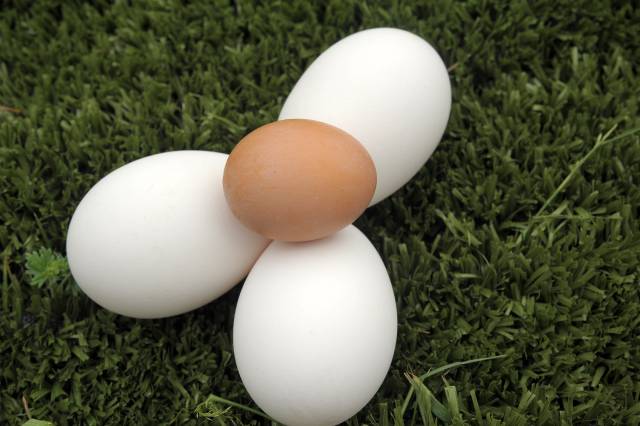
Goose eggs are much larger than both chicken and duck eggs.
Although the color can vary, goose eggs tend to have a white shell.
According to USDA data, the average goose egg weighs in at 144 grams (5).
Nutrition
Nutritionally, just one goose egg provides a lot of nutritional value. For example, each goose egg contains more than 20 grams of protein, a significant amount.
Based on USDA data, here is the basic nutritional profile per 144-gram egg (5):
- Calories: 266 kcal
- Carbohydrate: 1.94 g
- Fat: 19.2 g
- – Saturated: 5.18 g
- – Monounsaturated: 8.28 g
- – Polyunsaturated: 2.4 g
- — Omega-3: 0.80 g
- — Omega-6: 0.98 g
- Protein: 20.0 g
- Sodium: 199 mg
- Cholesterol: 1230 mg
Quail Eggs

Quail is a name used for several breeds of small-to-medium-sized birds.
These birds are quite commonly farmed for their eggs, which tend to be much smaller than other commercial types of eggs.
Quail eggs range in color, but they are often white or pale shades of blue and brown. In addition, the eggs typically have brown speckles on them.
According to USDA data, the average-sized quail egg only weighs nine grams, which shows how small these eggs actually are (6).
Nutrition
Based on the USDA FoodData Central data, an average-sized (9-gram) quail egg has the following nutritional values (6):
- Calories: 14 kcal
- Carbohydrate: 0.03 g
- Fat: 0.99 g
- – Saturated: 0.32 g
- – Monounsaturated: 0.39 g
- – Polyunsaturated: 0.12 g
- — Omega-3: 0.01 g
- — Omega-6: 0.08 g
- Protein: 1.17 g
- Sodium: 12.7 mg
- Cholesterol: 76 mg
For further information, see this complete guide to quail eggs.
Turkey Eggs
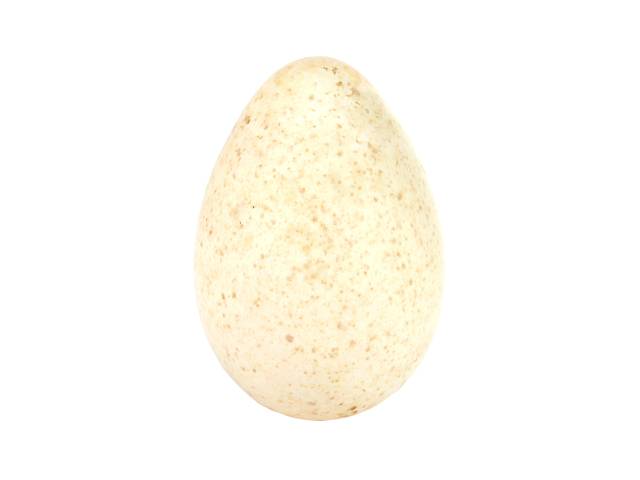
Turkey eggs fall somewhere between duck and goose eggs in terms of size.
These eggs are relatively large, and they are typically white-beige in color with brown speckles on the shell.
According to USDA data, the average turkey egg weighs 79 grams (7).
Nutrition
Here is the basic nutrition profile per 79-gram turkey egg (7):
- Calories: 135 kcal
- Carbohydrate: 0.91 g
- Fat: 9.4 g
- – Saturated: 2.87g
- – Monounsaturated: 3.61 g
- – Polyunsaturated: 1.31 g
- — Omega-3: 0.06 g
- — Omega-6: 0.92 g
- Protein: 10.81 g
- Sodium: 119 mg
- Cholesterol: 737 mg
Other Types of Eggs
Aside from the different egg varieties mentioned so far, other classifications of eggs include ‘omega-3 enriched’ and ‘organic.’
While products like omega-3 eggs may offer slightly better nutrient profiles, they are fairly similar in nutrient provision overall.
There are also other classifications of eggs like caged, free-range, pastured, and so on.
Although all eggs offer good nutritional profiles regardless of how the birds are raised, welfare issues are an understandable factor in such choices.
Types of Cooked Eggs
In addition to the different varieties of eggs, there are numerous ways to cook eggs.
These methods can alter the taste, texture, and nutritional values of eggs (particularly when additional ingredients are used).
Here is a look at seven of the most common options, alongside the basic nutritional values for each.
Note: all nutritional values are for regular chicken eggs and based on a two-egg serving. Also, there is no breakdown of fatty acids since this would completely depend on the particular oil/fat used for different cooking methods.
Baked Eggs

While not the most popular way to cook eggs, baked eggs are simple and tasty.
Baking eggs involves adding a bit of oil or butter to an oven sheet/tray or each part of a cupcake and muffin tin. Following this, add the eggs and bake.
Baked eggs are also known as shirred eggs, and extra ingredients can be added if desired, such as cheese or vegetables.
Here are the basic nutrition facts per serving of baked eggs made with two eggs and added fat (8):
- Calories: 202 kcal
- Carbohydrate: 0.75 g
- Fat: 16.02 g
- Protein: 12.9 g
- Sodium: 288 mg
Boiled Eggs

Boiled eggs are arguably the easiest way to cook eggs: bring some water to a boil, drop an egg or two in, and wait a few minutes.
However, the length of time that the eggs boil can make a big difference in taste and texture.
Hard-boiled eggs require a longer cooking time, and they have a firmer, crumbly yellow yolk. In contrast, soft-boiled eggs have an orange and runny yolk.
According to BBC Good Food, a boiling time of 5 minutes will provide a “set white and runny yolk,” whereas 10 minutes will result in the “classic hard-boiled egg.”
Since boiled eggs contain no additional ingredients, they have the same nutrition profile as raw eggs.
Two medium-sized boiled eggs provide the following basic nutritional values (9):
- Calories: 143 kcal
- Carbohydrate: 0.72 g
- Fat: 9.51 g
- Protein: 12.6 g
- Sodium: 142 mg
Fried Eggs

Fried eggs are one of the most popular ways of eating eggs. This can be part of an English/full breakfast in Western Europe and North America, an egg on top of a bed of rice in East Asian countries, or anything between.
It is straightforward to make fried eggs, and all it requires is a pan, a bit of oil, and a few minutes of cooking time.
Fried eggs cooked in oil with a pinch of salt would have the following basic nutritional values per two-egg serving (10):
- Calories: 210 kcal
- Carbohydrate: 0.74 g
- Fat: 16.92 g
- Protein: 12.88 g
- Sodium: 266 mg
Frittata

Fritatta is an Italian dish that is somewhat similar to an omelet.
However, as shown in the image above, a frittata is usually much deeper and contains various ingredients.
When making a frittata, the process starts with adding the beaten egg/ingredients mixture into a skillet on low heat.
As the frittata cooks unevenly, it is usually put in the oven or under a grill for a few minutes at the end. This last process allows the runner top layer to finish cooking and grow firmer.
Since a frittata uses many eggs and almost always has additional ingredients, it does not have a generic typical nutrition profile.
Omelet

Omelets are a popular dish made by frying a mixture of beaten eggs, often with additional ingredients, until the eggs develop a solid texture.
Some of the most common ingredients used in omelets include cheese, spinach, mushrooms, bacon, chives, and onions.
Although not quite as tasty, it is straightforward to make plain omelets too.
Since omelets require a source of cooking fat, they contain additional fat and calories versus eggs alone. Per typical portion of omelet made with two eggs, it would provide the following nutritional values (11):
- Calories: 210 kcal
- Carbohydrate: 0.74 g
- Fat: 16.92 g
- Protein: 12.88 g
- Sodium: 266 mg
Poached Eggs
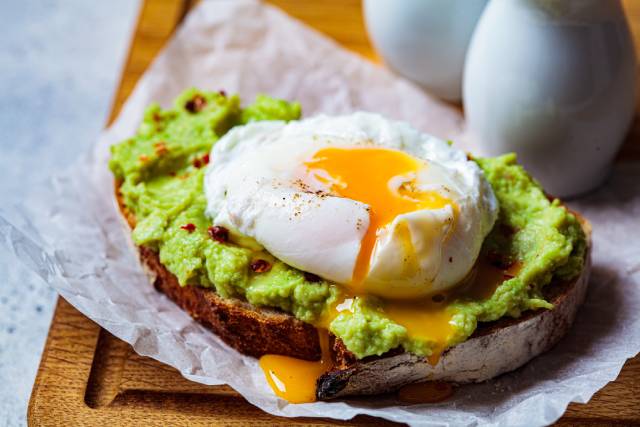
Poached eggs are one of the easiest types of eggs to make.
To make them involves cracking each egg open and gently pouring it into simmering water, then waiting a few minutes for the poached egg to form.
Note: The gentle bit is important to avoid the egg dispersing in the water.
For an even easier poached egg, poached egg makers (disclosure: affiliate link) make the process error-proof.
Since poached eggs don’t need any extra cooking fat, their nutritional value is the same as whole eggs.
However, poached egg recipes such as eggs benedict contain various extra ingredients (and a lot more calories).
Here are the basic nutritional values of two plain poached eggs (12):
- Calories: 143 kcal
- Carbohydrate: 0.71 g
- Fat: 9.48 g
- Protein: 12.5 g
- Sodium: 296 mg
Scrambled Eggs
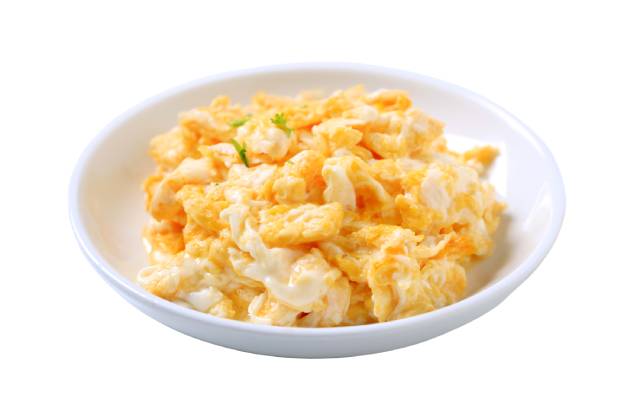
Scrambled eggs involve beating the eggs into a consistent runny liquid. The eggs can also be mixed with water, milk, cream, butter, or sour cream, if desired.
After this, a bit of butter or oil is heated in a pan, and then the egg mixture is added once the pan gets hot. Stirring occasionally, but not constantly, should result in fluffy scrambled eggs.
According to USDA data, plain scrambled eggs made with a bit of butter will provide the following values per two-egg serving (13):
- Calories: 198 kcal
- Carbohydrate: 0.75 g
- Fat: 15.56 g
- Protein: 12.94 g
- Sodium: 310 mg
Final Thoughts
As shown in this article, there are many different types of eggs, and it’s a wider choice than just regular chicken eggs.
There are also many ways to make eggs, making them one of the more versatile foods around.
On the positive side, eggs are also an excellent source of protein and numerous vitamins and minerals.
For more on eggs, what effect does their dietary cholesterol content have on blood cholesterol levels?
Here’s a guide: Cholesterol In Eggs: Does It Raise Blood Cholesterol?



